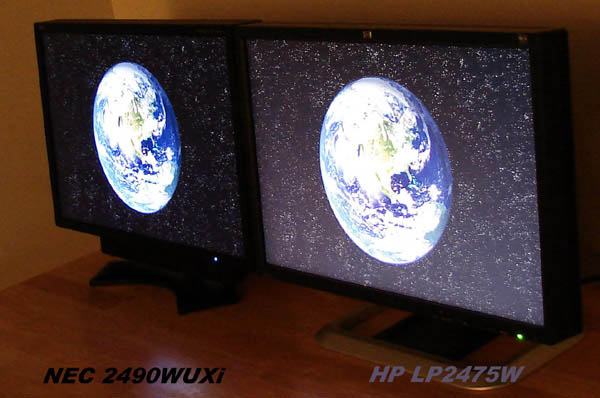Caught this interesting nugget the other day over at DisplayDaily:
"While I'm talking about contrast, there have been some interesting developments in contrast ratios for some IPS panels. Normally, while IPS LCDs have very good viewing angle performance, with well maintained colours and fairly consistent contrast - at least over a normal viewing cone - they typically only have from 1,000:1 to, perhaps, 1,500:1 contrast (without backlight modulation). AUO had a panel at 2,200:1 (although, as at SID, we weren't able to find out what they are doing) while Innolux went further and showed an IPS panel with 3,500:1 contrast. Again the company wouldn't confirm what they are doing, but I am pretty confident that the method is to use collimated light through the LCD and then to use a film to broaden the emission on the front of the panel. The clue was that Innolux confirmed to me that it is using a similar technology for its LCDs with 'privacy mode' and they do use control of the angle of the light that enters the display from the backlight."
Nothing as exciting as dual layer, but improvements in native contrast are always welcome, and could additionally help to mitigate blooming when used in conjunction with FALD backlighting. Something that crossed my mind was whether Apple's new XDR display could be using one of these higher contrast IPS panels. Would certainly set it apart from some of the other FALD monitors in a meaningful way.
Also worth mentioning in the same article are some improvements to VA viewing angles that Chi Mei is working on. Seems that IPS and VA are inching closer together in performance with time.
"While I'm talking about contrast, there have been some interesting developments in contrast ratios for some IPS panels. Normally, while IPS LCDs have very good viewing angle performance, with well maintained colours and fairly consistent contrast - at least over a normal viewing cone - they typically only have from 1,000:1 to, perhaps, 1,500:1 contrast (without backlight modulation). AUO had a panel at 2,200:1 (although, as at SID, we weren't able to find out what they are doing) while Innolux went further and showed an IPS panel with 3,500:1 contrast. Again the company wouldn't confirm what they are doing, but I am pretty confident that the method is to use collimated light through the LCD and then to use a film to broaden the emission on the front of the panel. The clue was that Innolux confirmed to me that it is using a similar technology for its LCDs with 'privacy mode' and they do use control of the angle of the light that enters the display from the backlight."
Nothing as exciting as dual layer, but improvements in native contrast are always welcome, and could additionally help to mitigate blooming when used in conjunction with FALD backlighting. Something that crossed my mind was whether Apple's new XDR display could be using one of these higher contrast IPS panels. Would certainly set it apart from some of the other FALD monitors in a meaningful way.
Also worth mentioning in the same article are some improvements to VA viewing angles that Chi Mei is working on. Seems that IPS and VA are inching closer together in performance with time.
![[H]ard|Forum](/styles/hardforum/xenforo/logo_dark.png)
